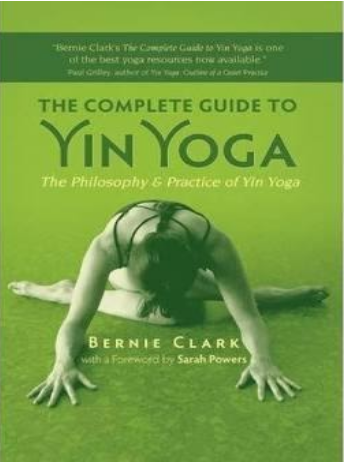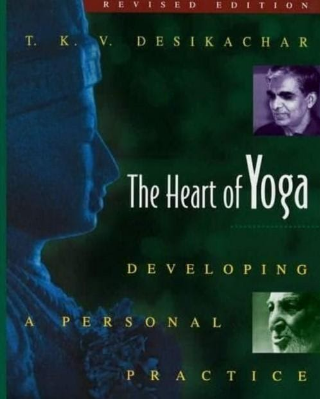 Recommended Reading
Recommended Reading

Yoga practitioners and experts from many cultures and traditions continue to explaining their understanding of yoga on a physical, emotional and spiritual level. You could spend a lifetime reading these inspirational words and learn so much from new perspectives and shared experiences.
Here are our 5 top choices that we feel will support your training at Kranti Yoga. These are the books that have been read and loved by the team here. They are listed in no particular order.

Ashtanga Yoga; Practice & Philosophy by Gregor Maehle
This is the first book of its kind, presenting a comprehensive guide to all eight limbs of Ashtanga Vinyasa Yoga. Join author Gregor Maehle, a seasoned yogi and compassionate teacher, as he guides you through the history and lineage of yoga; the fundamentals of breath, bandhas (energy locks within the body), drishti (the focal point of the gaze), and vinyasa (sequential movement); a detailed breakdown of the asanas of the Ashtanga Primary Series, following the traditional vinyasa count; a lively and authentic rendering of the complete Yoga Sutra of Patanjali, yoga’s ancient sacred text; and a glossary of yoga terminology.
A copy of this book is provided as part of the course materials for the 200/300 Hr YTTC.

Yoga Mala by Sri K Patthabi Jois
One of the great yoga figures of our time, Sri K. Pattabhi Jois brought Ashtanga yoga to the West more than thirty years ago. Based on flowing, energetic movement coordinated with the breath, Ashtanga and the many forms of vinyasa yoga that grow directly out of it have become the most widespread and influential styles practiced today.
Yoga Mala—a “garland of yoga”—is Jois’s authoritative guide to Ashtanga. In it, he outlines the ethical principles and philosophy underlying the discipline, explains important terms and concepts, and guides the reader through Ashtanga’s Sun Salutations and the subsequent primary sequence of forty-two asanas, or poses, precisely describing how to execute each position and what benefits each provides. It is a foundational work on yoga by a true master.

Four Chapters on Freedom by Swami Satyananda Saraswati
Four Chapters on Freedom contains the full Sanskrit text of Rishi Patanjali’s Yoga Sutras as well as a translation and an extensive commentary. The Yoga Sutras, containing 196 epithets or threads of yoga, is the most respected treatise on yoga. In his commentary on each verse, Swami Satyananda Saraswati fully explains the text and the path of Raja Yoga. Serious yogic aspirants and spiritual seekers will find invaluable guidance within these pages.

4. Functional Anatomy of Yoga by David Kiel
This book enable both the casual reader and the seasoned practitioner to understand and implement the anatomical structure and function of the body in yoga. Written with a conversational tone, the book delivers the complex subject of human anatomy in a way that is both proactive and clear. The underlying theme of the book is integration. David Kiel outlines how yoga teachers and practitioners can utilise a deeper understanding of their anatomy as they approach the larger scheme of yoga. How do the supposed ”parts and pieces’ of the body synchronise tosupport integrated movement? Finally, how do the various yoga postures interrelate from the perspective of functional anatomy?

Light on Pranayama by BKS Iyengar
In the classic work, BKS Iyengar presents the definitive guide to Pranayama, the yogic art of breathing. Part one presents the theory, art and techniques or Pranayama, whilst part two offers insights into meditation and relaxation.
This authoritative and practical guide is an indespensible tool to the art and technique of yogic breathing for beginners and experienced yoga teachers alike.

The complete guide to Yin Yoga by Bernie Clark
The Yin Yoga Book provides an in-depth look at the philosophy and practice of Yin Yoga. Clark’s fascinating and comprehensive book is divided into three sections:
(I) What is Yin Yoga; (II) The Benefits of Yin Yoga, including discussions of anatomy, the energy body, and the heart and mind-body; (III) The Practice of Yin Yoga, including illustrated descriptions of 30 yin yoga asanas (poses).
Yin Yoga has the same goals and objectives as any other school of yoga; however, it directs the stimulation normally created in the asana portion of the practice deeper than the superficial or muscular tissues (the yang tissues). Yin Yoga generally targets the connective tissues of the hips, pelvis, and lower spine.
Yin Yoga is a perfect complement to the dynamic and muscular (yang) styles of yoga that emphasize internal heat, and the lengthening and contracting of our muscles

The Heart of Yoga a book by T.K.V. Desikachar
In The Heart of Yoga Desikachar offers a distillation of his father’s system as well as his own practical approach, which he describes as “a program for the spine at every level–physical, mental, and spiritual.” This is the yoga text to outline a step-by-step sequence for developing a complete practice according to the age-old principles of yoga. Desikachar discusses all the elements of yoga–poses and counterposes, conscious breathing, meditation, and philosophy–and shows how the yoga student may develop a practice tailored to his or her current state of health, age, occupation, and lifestyle.

Asana Pranayama Mudra Bandha by Swami Satyananda Saraswati
This book combines a comprehensive overview of asana; while at the same time giving clear explanations of the deeper aspects of yoga, including breathing (pranayama), body attitudes (mudra), energy locks (bandha), energy centres (chakra), and yogic cleansing (hatha yoga)..

Yoga Anantomy by Leslie Kaminoff and Amy Matthews
Yoga Anatomy provides you with a deeper understanding of the structures and principles underlying each movement and of yoga itself.
From breathing to inversions to standing poses, see how specific muscles respond to the movements of the joints; how alterations of a pose can enhance or reduce effectiveness; and how the spine, breathing, and body position are all fundamentally linked.
